67% of surveyed B2B companies reported marketing content as a top three or high priority area within their overall 2015 marketing strategy. At the same time, these businesses wasted an estimated $958 million each year in inefficient and ineffective content marketing spend.
Well, these businesses are right in one way. If they need to increase their leads and grow the blog traffic, they need to fully embrace content marketing and do it well. Blogs, videos and podcasts are one of the ways of marketing content. Blogging is particularly one of the best ways to attract leads.
Reportedly, B2B companies that blog generate 67% more leads per month than those who don’t.
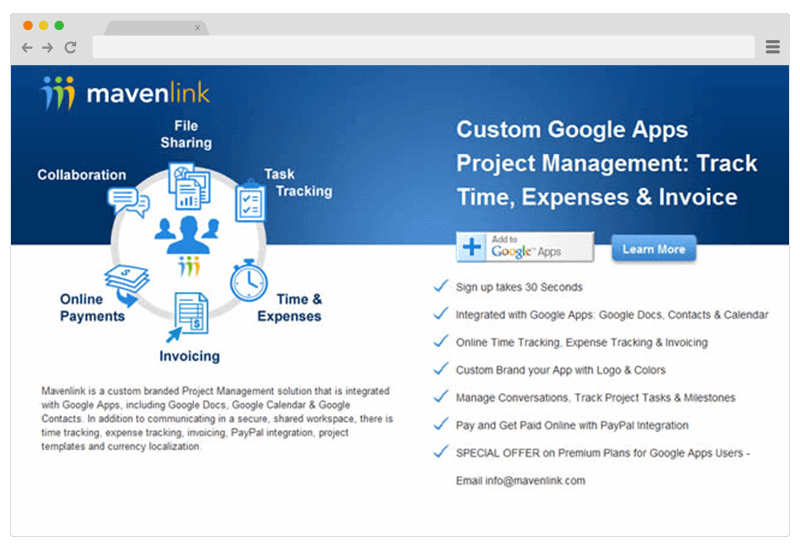
Despite the efforts and budgeting for your annual content marketing strategies, you are still struggling to generate leads. Could it be that you are offering low-value content, yet the modern SEO demands that you change tactic to high-value SEO?
Maybe you have a hard time making your visitors to trust you and that is why you are suffering from low lead generation. The first rule of the book is to remember what Bill Gates said. Content is King. In addition to this, while you plan your content marketing strategy, understand that different types of content will generate different number of leads.
Here is the deal:
We understand that there are lots of content and these have different success rates. But did you know this is fully dependent on how you do it and how well you understand your target market?
Let’s discuss 8 ways of improving your content marketing strategies for more lead generation.
Contents
Step 1: Create A High-Converting Landing Page
People visit your website to read content. Right? But how will you attract them and cause them to stay? What page opens first when traffic lands on your website? What kind of content do you offer at this stage?
Well,
We understand that the ‘about us’ page is the ideal page for you to take your site visitors. While this is good, it will not do much in attracting better leads for you. Even then, you will have high bounce rates and very low-return visitor rates.
Advantages of landing pages:
A high-converting landing page generates leads easier and faster than any other content on your website. Through this page, you can offer relevant marketing offers, collect necessary information on your site visitors in order to speak to them later on and also understand your most engaged prospects.
The big problem:
Reports show that marketers ignore landing pages in generating leads and enhancing business success. As matter of fact, instead of directing traffic to the landing page, 44% of clicks for B2B companies are directed to a home page.
It gets worse:
Out the few businesses that have a special landing page for their traffic, 62% of them lack a lead capture page that is essential for retaining details on their business leads.
Cause of the problem:
As the report by MarketingSherpa showed, the main reason why businesses are doing content marketing wrong through landing pages is their lack of understanding of how to create them and optimize them for leads.
After this, the team should also know how much they will tweak the page to ensure that the leads are highly converted to valuable prospects, customers and great sales.
Here is how to optimize your landing page for better leads.
Before we start, this is how SEO Moz generated 1 million subscribers in one year by simply optimizing content on their lead generation page to drive more traffic their way.
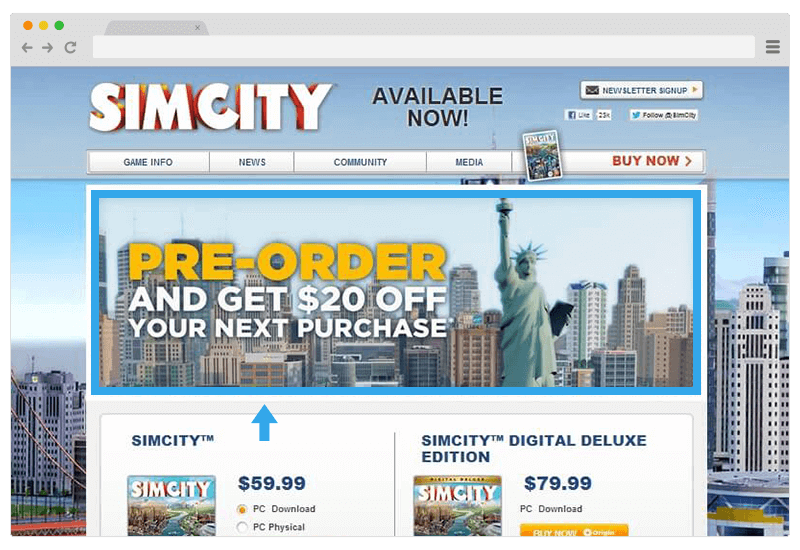
This is an incredible achievement especially after e-consultancy reported that only 1 in 5 marketers are happy with their landing page conversion rates. To achieve this you need to understand a few things.
1: Understand The Purpose Of Your Website
The type of landing page you create and its subsequent type of content is highly dependent on the purpose of your website. Is it just for fun, commercial or both of these? Does your homepage have a goal? And if so, how many are these and can they be divided into categories?
Once you understand these aspects about your business and website, you will be able to generate relevant and high converting content, because you will be giving information on what you are good at and as offered in your website.
2: Focus On Usability
As much as we all know that color and aesthetics are great for marketing, focusing on aesthetics alone and forgetting your landing page’s usability will only result in less lead generation and conversion rates as expected. Do you know why? People will need to read something concrete and valuable from your website, not just see color.
So, what do you do?
In addition to focusing on aesthetics, there are certain major parts of your landing page that you should concentrate on. First of all, you need a nice looking headline that will capture your target audience’s attention.
This should be followed with a secondary headline that now narrows in on the main topic, preparing your reader on what they should expect to find out once they read further. The third part you should concentrate on is the content just after the second headline.
This part should discuss issues that you think your audience could be going through, then explain that you are the best business to consult on such matters, citing convincing reasons. At this point, you clearly show the value that you are going to add to your target audience and formulate a compelling proposition.
Then this:
The page should also contain a testimonial, which ideally should contain a buyer photograph. It has been reported that 90% of online traffic trust recommendations from acquaintances while 70% will trust people they don’t know.
This means that for you to create content that generates quality leads, your landing page should at least include photos from satisfied buyers who could further convince your leads.
Have a call to action as well. Normally, you simply do not generate content without focus. Like we had earlier discussed, you need to analyze what you need done and ensure that you include a call-to-action on your content page to direct your traffic on what to do.
For example, if the end result is a download, you should ask your target audience through a call-to-action button to download the material.
In case you want your leads to know that you are selling a machine for example, including a video showing and explaining how the machine works will attract more people. It is said that seeing is believing and videos will help you achieve just that.
In his website, Chris Ducker clearly demonstrates a great example on important landing page components that are helpful in improving your content marketing strategy.

3: Have A Fast landing Page, Optimized For Different Devices
There is too much content on the internet. This means that certain simple aspects such as your site’s speed really matter on how you present content to your target audience. One small delay and your leads will immediately leave your page and visit your competitor’s website which is faster.
As a matter of fact, according to recent statistics by KISSmetrics showed that just one-second delay in landing page load time will most likely reduce conversion rate by 7%.
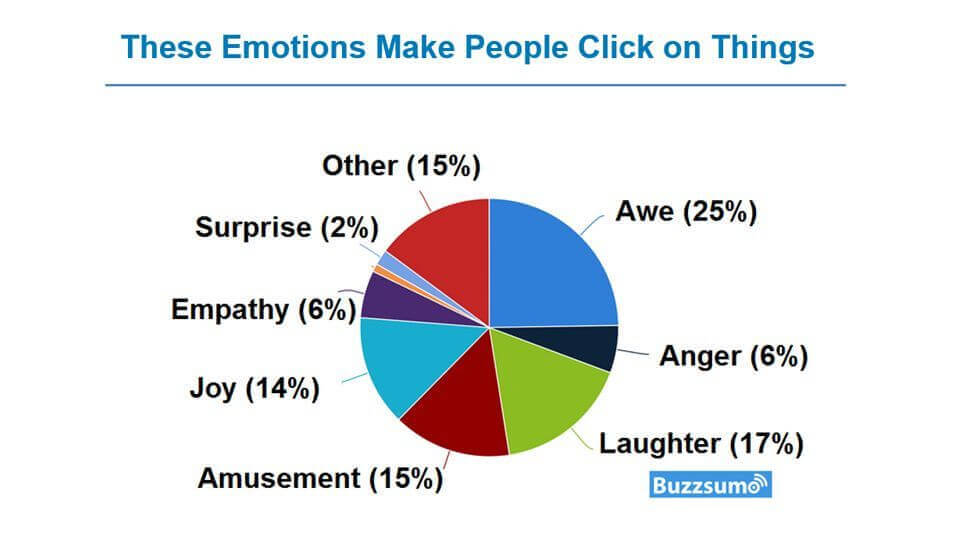
What about the effect on other devices:
As a content marketer, you are not restricted to traffic strictly coming to desktops. You should also be considerate of traffic coming from smart phones, tablets and other devices as well. Currently in the United States, 64% of American adults own a Smartphone and use these devices to visit the internet.
What this means for you:
While these people surf the internet, they will most likely come across your content. If it is not optimized for their kind of devices, they will leave your website. Mobile internet users have indicated that they would prefer a mobile surfing experience that is comparable to desktop experience.
As much as they still expect phones to have a slower load time compared to desktops, you still need to optimize in terms of speed and other features to satisfy this market.
The following pie chart shows you the percentage of mobile users and their different experiences on mobile surfing.
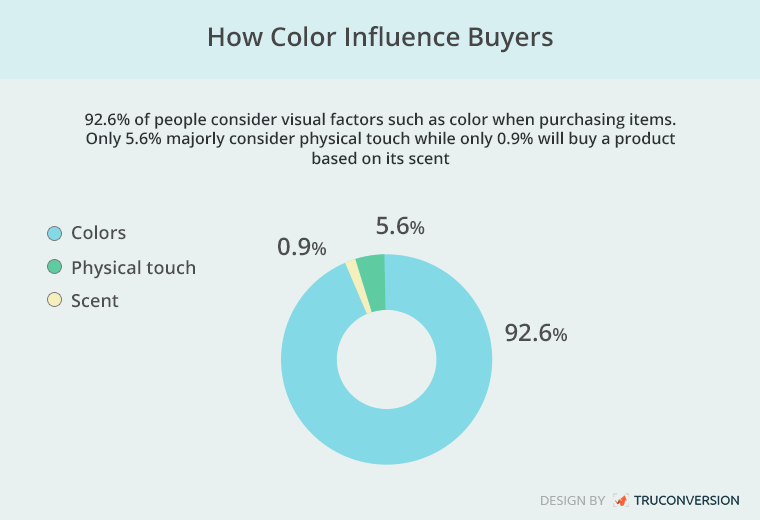
Despite their patience, here is the average user wait time on mobile devices.
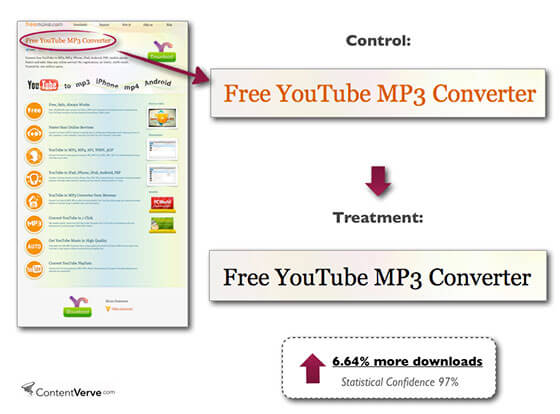
Step 2: Write Case Studies
For a long time, case studies were thought to be long and boring, a perception that sent your leads scattering to directions other than yours. In case they really needed to get information from your case study, they would struggle to find abridged versions or read blogs that shortened the study.
Fast forward to today and case studies are hot in the world of content market. They have been proven to be a successful lead magnet. In fact, a recent study by Content Marketing Institute revealed that small B2B marketers believe case studies to be the most effective content marketing strategy.
According to these marketers, this marketing strategy is not only good for lead generation but also prospect nurturing. Different reasons have been cited.
Why you need case studies.
1: They Boost Credibility
Case studies serve as powerful social proof on the effectiveness of your products or services. This way, consumers are able to develop and build trust and confidence in you as a business, due to the relatable human evidence.
The quality of information presented is far much better than information given in testimonials. In a case study, a reader is taken through a journey, which shows the upside and downside of a product or service. Speaking in detail on how each business problem was solved and the most effective method of using a particular product.
With a case study, a prospective client can prove whether a marketer’s word of mouth was truthful enough or was sheer marketing speak. The fact that one of your clients was confident enough to allow themselves to be quoted in your product gives your target market confidence in what you do.
Here is an example:
Dumdumpops.com shared a case study and was able to experience 91% increase in sales after their credibility and social proof was boosted. Specifically, there was 214% increase in page views to interactive pages of dumdumpop.com, 184% increase in revenue from mobile traffic. ( we hope now you see the need to optimize for mobile devices).

2: They Give Reusable Information
From the details emanating from case studies, you can reuse the information and generate a whole new lot of content. For example, a case study that shows different growth levels can be used to produce an infographic, publish a podcast of the review, make a video with the relevant business speaking on its success.
This will be the same information, reproduced in different formats, relevant for different content marketing platforms. For example, video could be posted on youtube. The beauty of this is that you can include visual beauty in your case study and further influence leads.
Take these statistics for example which showed that people will share a photo URL 35% more times, compared to a hashtag and video URL at 16% and 28%. Here is a graph showing this.

3: They Cure Content Marketing Blues
As much as you are a guru in your field, sometimes you tend to have content marketing blues after running out of content ideas. This is where case studies come in handy. They give you fresh and totally originally content, that has both quality and quantity that could rank high on search engines.
With the customer being in control of the content, you will always have fresh and dynamic content. This is better because it is only a matter of time before your audience gets to fully master your type of language and get bored. Unique case studies offer the much needed change.
So, how do you create effective case studies?
Well, not all your customers will give you the compelling case study that you need to generate leads and not all of them will be willing to share their story.
This is what you do:
Method 1: Get Client Agreement
It is not easy to get a client who is ready to be featured in a case study. Some clients even have a strict policy of not getting named or quoted in a case study. This could be frustrating especially when you get the idea that this particular client could be your source of the best case study.
It is therefore always advisable to talk to your clients first and settle on an agreement for a case study. Even when they choose to be anonymous, it is still good because you will get good information, albeit a less powerful effect on your target audience.
Method 2: Enter Awards
According to Steve Rayson, entering awards is a good way of developing case studies. The main advantage with awards is that they force you to seek client agreement before entering the award. Once you have this agreement, you can begin on your case study story.
It gets better:
You are able to develop a time table that will guide the story development, identify the key benefits of your products to the business, gather evidence and document them. This is the time you can use to speak to your clients, find mutual benefits and discuss any perceived fears or problems.
Method 3: Conduct An Interview And Get Quotes
Quotes are very powerful and convincing because they are proof that the said words came out of the horse’s mouth. An interview on the other hand is very effective when you need to collate important information.
The interview allows you to ask follow up questions whenever you feel you need any clarifications. All this happens so easily because once you get an award agreement, it is way easier to persuade your client to agree to be featured in a case study.
Method 4: Structure Your Case Study
Ensure that you have a standard structure for your case studies. As they are, case studies are bulky and hard to attentively read. To improve on readability, ensure that your standard template is one that can allow readers to quickly skim through and still get relevant information.
You could decide to focus on challenges or issues, solutions, results and take aways and other relevant structures. Also include several pictures and graphical representations which would summarize the information in smaller but readily understandable chunks.
Now that you know:
Ensure that you set aside at least one day a week to post a case study. Within a short time, you will notice massive traffic coming your way. B2B marketers have reported 70% effectiveness rate for case studies. Do not hesitate to start your own series and reap great leads.
The general point:
Ensure that you do your case studies right in order to attract the best leads. Ensure that you research on hot areas of interest in your niche. For example, if you offer solutions for B2B companies, focus your case studies on areas where businesses and marketers could improve in order to increase their sales and revenue.
Step 3: Run a Content Marketing Campaign
Marketing basically entails selling your business to the outside world and there is no better way to do this than running a marketing campaign. A marketing campaign however is not something that you create in the shower. It requires intensive and extensive market research in order to figure out which ideas will sell.
In general, your campaign will start with understanding your position in the market place and ends with small details like how you word your advertisement. You also need to make the best decision on the kind of media you will use for your advertisements and how long you plan to run your campaign.
Let us look at 2 companies who ran successful campaigns and pick a few pointers on how best to go about this content marketing strategy.
Campaign 1: The ‘Get Optimistic’ Campaign by Xerox
In early 2012, Xerox launched the ‘get optimistic ‘ campaign after their initial studies showed them that there was little to no difference between the business and its competitors, when it came to value propositions.
To effectively run the campaign, the company seamlessly integrated the content marketing with sales outreach. At first, the company sent targeted biweekly emails to prospects. These had links that sent these prospects to a specific microsite.
There was more:
The company followed up with a series of phone calls to the targeted prospects to further entice them. The company did not stop there and proceeded to launch the ‘Chief Optimist’ magazine in partnership with Forbes, and later on sent the copies to their prospects.
The results:
The content marketing campaign yielded amazing results. Over 70% of the targeted prospects interacted with the microsite. When these interactions were compared to the earlier email marketing campaigns, it was discovered that readership had increased by 300-400% and the prospect list increased to 20,000.
It did not end there:
The business realized over $1.3 billion in pipeline revenue. To crown it all, Xerox won the ITSMA Marketing Excellence Award for this content marketing campaign. Clearly, this was even more exposure for the business and increased prestige and pride.
Campaign 2: Shipserv marketing campaign
To most people, merging the shipping industry and content marketing campaign is quite odd. Despite this, Shipserv, a leading marketplace in the maritime industry ran a marketing campaign and was able to garner almost 5 times the returns from traditional media marketing.
Experts advise that a good content marketing campaign should be complemented with social media marketing, in order to reach all your targets. However, Shipserv was able to pull off a great content marketing campaign even though their traditional customer base did not use social networking platforms.
How the company did it:
First of all, the company sought to understand the information needs of its customer base. This research was followed up with blog articles that featured different customers in a bid to initiate conversations within the industry.
In addition to the blogs, the business published white papers on its website to further give their customers and prospects valuable information on the shipping industry. Armed with these resources, the business began promoting its content on social media.
Their original and important information was promoted via blogs, Facebook and Twitter posts, LinkedIn, newsletters, podcasts and videos.
The results:
Even with most of its client base outside social media, the company was able to attract new leads. At the end of the exercise, there was a contact-to-lead conversion increase by 150% and the number of sales-ready leads had increased by more than 400%.
In less than three-months, the company was able to break even on its $30,000 social media investment in less than three months.
Step 4: Write White Papers
These are sales and marketing documents used by businesses to entice prospective customers to learn more about a service or product, with the end intention of making them to actually try out the services or products.
As a content marketing strategy, white papers have a 51% usage rate by B2B marketers compared to articles and social media which stand at 79% and 74%. Although used by only slightly half the number of marketers, the strategy has been proven to impressively increase leads.

As suggested by IDEmployee, white papers are effective ways of building both interest and preference to your product. This content marketing strategy usually leaves your readers yearning for more. Ultimately, they graduate from being just leads but also great customers.
While the promises sound rosy, white papers are some of the tactful and hard content marketing strategies you could employ. Before releasing your white paper to the public, ensure that the white paper has the following characteristics:
Characteristic 1: It Should Attract An Audience
The core of lead generation is attraction. No one will come your way if you fail at attracting them. This is why this is also a key element of successful white papers. You could be offering very vital and useful information to your target audience but if you give a bad presentation, no one will bother to read it.
What this means:
Your title should be catchy, in bold font and a big and legible font. Also ensure that the design on the cover page is enough to attract someone and entice them to open the white paper and read it. While you do this, remember that you are using this to attract a particular part of your market. Therefore, always remain focused because white papers are audience-specific.
Characteristic 2: It Should Engage The Audience
Well, kudos you have been able to attract leads using your catchy white paper title. But you need to ask yourself, after that, what next? Are you the type of business that seems good from far yet it is actually far from good?
The trick:
Melanie Silver had a business challenge of writing a commentary for a leading business continuity provider known as SunGard Availability Services, in a bid to give meaning to raw statistics that the business had collated after a research.
The business needed to present this information in an easy to understand yet very resourceful way. To help keep readers interested and engaged, Melanie Silver opted to present this data in graphical and pictorial representations that had short but concise explanations.
The document was presented in a manner even busy CEO’s would find meaningful information by just perusing the paper during tea break.
Here is how one of the pages looked like.

Did you know that the human brain has been designed to process visual information 60,000 times faster than it does with plain text? This is so serious that scientific research has showed that people will on average, remember only 20% of what they read while they will never forget anything on what they see.
With this understanding, your white paper should be designed to include more of images and illustrations. While you do this however, remember to add photos and illustrations in moderation. There is a thin line between too much and just enough. Don’t turn your white paper into an album.
Characteristic 3: It Should Inform The Reader
After attracting your leads using a catchy headline and an interesting general look of the white paper, it is time to get deep into the main part. You need to fill your reader will tons of useful information. This information should be on anything other than sales pitch.
How do you start selling even before people understand what you do? That is synonymous to putting the cart before the horse. Instead of parading everything that you sell, ensure that you use this opportunity to educate your readers on the advantages and downside of using your services or products.
Remember to have a balance of pros and cons. A piece full of just pros seems too sales-oriented. At the same time, when you include cons, ensure that you do not include damaging information that will serve as an immediate deal breaker.
How do you convert readers into customers?
It is said, that a well written and presented white paper usually does the convincing job of converting readers into customers without further effort. The best way to do this is ensure that your readers are relaxed by writing in a simple conversational tone that is professional at the same time.
To conclude, David Ogilvy, author of Confessions of an Advertising Man, says that the more informative your advertising is, the persuasive it will be.
Step 5: Create Memes
Human beings are very creative. Once an incident happens, there are always loads of memes circulating in the internet. As a matter of fact, there are people who have cut out a niche for themselves in this area, so much so that when something happens, traffic flows to their direction seeking the latest classic meme to laugh about.
Are they good for business?
Absolutely yes! Memes are easy and fast to make and can go viral within seconds. The fact that they are hilarious and interesting always keep people digging and desiring for more. Economically speaking, these are also great ways of saving big bucks on content marketing.
The good side:
Unlike technical content like infographics, memes don’t require graphic design skills. Simple websites such as Meme Generator and Quick Meme allow you to simply add text on popular meme images.
It gets better:
Memes are very adaptable. Unlike blogs and white papers which need you to be very specific on audience and handle each audience differently, memes give you the freedom to adjust your humor or information package to whoever you want at whatever time.
Truthfully, there is no niche that is too narrow for memes. Any business can quickly tap into this potential which gives results within a very short time.
You should note:
Due to their ‘brief’ nature, memes are not great content for blogs unless you are doing a compilation. Instead, use them on your social media campaigns to boost your company content. Twitter, Pinterest and Instagram are hot platforms to post your memes. They will sure spread like wild fire.
In no time, you will start seeing leads flocking to your website. Look at this case study for example.
The full-service agency known as Pensil Media organized a meme contest for Samsung, which is one of its clients. The contest was aimed at growing a community for the next stage of the business campaign that Samsung intended to have.
The result:
This was a win-win situation for both parties. Pensil Media was able to collect 4,470 new subscribers data for Samsung and the Samsung Facebook page received 146,000 new page likes. Additionally, the 4,470 new images uploaded during the contest was uploaded as crowd sourced content to help it last for 6 more years, if posts were being posted twice a day.
This is what Andre Prodjo, the campaign manager, had to say.

A sneak-peak into Pensil Media
The Indonesia-based business services mega clients such as Suzuki, Ac Johnson, Unilever and Samsung among others. Normally, the business uses new trends and technologies in the market to enhance better market engagement and create both online and offline campaigns for their clients.
The task:
Samsung needed to run the meme contest to generate more leads. The business was specific on the type of its target audience. Targets needed to have a smartphone, be between 16 and 30 years of age and might be interested in Samsung’s cheaper products, especially if the target cannot afford the expensive Samsung items.
How it was accomplished:
To get to this specific audience, Pensil media had to partner up with the Facebook page, Meme Comic Indonesia , which already had a lot of interaction with the target audience that Samsung had in mind. Basically, the target audience had a huge number of page likes and frequently talked about the business.
In the online Facebook page, the targeted age-range ultimately created and shared internet memes that they used to entertain each other with. This of course served as the best platform to execute the idea that Samsung had.
The photo contest contributed a great deal to Samsung’s content marketing efforts and contributed to an even larger campaign.
How the campaign was run:
During the 26-day photo contest, participants had to upload their memes in into one of the three categories. The three categories were love story, school life and parody of famous people or characters. The top 3 winners who garnered the most votes won mobile phones from Samsung Galaxy Youth series- Samsung Galaxy Young, Samsung Galaxy Ch@t and Samasung Galaxy Fame).

Lessons learnt from the contest.
When doing a meme, there are 4 key elements that you should keep in mind. This is what Samsung Indonesia did and generated 150,000 leads.
1: Centre Your Meme On A Great Topic to Generate A Viral Effect
Memes are very popular nowadays, especially because anyone can generate their own meme. For this reason, Samsung Indonesia was very wise in choosing a meme contest for their marketing campaign. Do you know why?
The company had a relevant audience of young people who actually love memes. As a matter of fact, 4470 entries were received. The company understood the viral nature of memes and took advantage of this trend. As a result, a total of 178,928 people visited the campaign. Lastly, this was a fun and quick thing for people to do, enticing them to participate.
2: Give Your Target Audience a suitable Grand Prize
As much as memes were viral and fun, the company understood that this was not enough to attract more leads. This is why they offered a grand prize that they knew their target market was going to love. At the same time, the business had to ensure that it did not have an expensive budget for the campaign.
This is how they cut costs:
They offered grand prizes that were not too expensive and were not the latest models from Samsung. But they found a balance in that the prizes were perfect enough to honor the winning contestants and create a deeper engagement with the brand.
3: Increase Your Brand Awareness
Because the uploaded memes could only be viewed from the contest pages, Samsung was able to increase its visibility because site visitors were able to interact with Samsung elements whenever they visited these pages.
Here is how this happened:
The business changed its Facebook cover photo and ensured it was similar to the contest’s header page, there was a like-gate that showed the prizes, which of course were the Samsung mobiles. To further spread brand awareness, Samsung ensured that its brand logo was featured on the footer of the pages.
Have a look at the cover page:

4: Don’t Pay for Advertisements, Pay A Few Influential Messengers
Instead of paying Facebook to advertise the contest, the business opted to pay a few influential messengers, with a large following on Facebook. Clearly, advertisements were unnecessary because the viral nature of memes caused both visitors and subscribers to share them so many times.

After expecting only 1,500 entrants, the company was in for a pleasant surprise. There were a total of 4470 uploaded entries, more than 100% increase in expected engagement. This clearly demonstrated the effectiveness of memes in content marketing.
During the 26-day contest period, the company was able to gather 15376 votes, proving that the contest had indeed gone viral and was entertaining to the visitors. In total, 19,846 leads were generated by Samsung through interactions as participants or voters who were exposed to the brand.
It got better:
178,928 people visited the campaign and the page received 146,000 new likes. This means that more people were not only aware of Samsung, but also opted to engage with the business. The business was also able to impressively cut costs as earlier indicated. The cost of one subscriber was $0.09 and the cost of a new like was $0.002.
The agency opted to use a pro monthly plan costing $125 and the grand prize cost $300 in total. Clearly, you need not go overboard when budgeting for your content marketing.
Step 6: Create Data-Driven Content
No matter how good you are at marketing content, you should examine the quality of your content. It is reported that 87% of prospects say that content targeted at their industry is more valuable to them while 9 in 10 businesses will promote and generate leads with useful content targeted at a specific group of people.
Here is how to create the right content for your business:
1: Identify Content That Your Users Want
No one can ascertain with complete confidence and certainty that they know what their target market wants or needs. The good news is that there are certain metrics that you can use as a marketer to understand the needs if your target market, in order to avoid wasting time on unnecessary content.
Let me show you how badly you need to do this:
A report published by the Content Marketing Institute showed that 62% of people actually feel good about a company that delivers custom content. This means that their chance of purchasing from this particular company is very high.
The best way to understand what your target market needs, is to look at what they are currently reading or following. To do this, you need to do an intensive blog analysis. Sure enough, you cover different topics and some perform better than others.
Maybe you do not have the highest traffic in your blog but a little observation on content that generated engagement, no matter how small, could help you figure out the best way forward. Truth it, had you offered bad content, no one would engage.
There are several tools that you could use to analyze your blog traffic and page performance. One is Truconversion which seamlessly integrates with Google analytics to give you the best in-depth analysis.
Is this definite?
Well, no. A high-performing blog could be the result of heavy and intensive marketing efforts and not necessarily the result of a catchy headline and great content. However, this is still a good step in understanding your audience.
Instead of using tools, you could instead try to directly talk to your target audience. Any feedback from them is highly useful. Better yet, directly engaging with them will give you a chance to ask follow up questions and better understand their needs.
2: Study And Research On Successful Content Headlines
Did you know that a magnetic headline is great at marketing content? In fact, as reported by Copyblogger media, 80% of people who see your headline will click and read it. However, they will only continue past that point if the headline is persuasive enough.
What this means for you:
You need to put in a little more effort in tweaking your headline and learn how to write powerful headlines that convert. While this is a successful strategy, it could sometimes take a lot of time before you become a guru at creating powerful headlines.
Gladly, there is a short cut:
First Short Cut: Study Online Publications
Online publications have mastered the art of creating attractive headlines because they operate in a highly competitive space. They have the world’s greatest copywriters who have perfect understanding of their target audience and generate headlines that will immediately attract insane traffic.
A good source of these online magazines is magazines.com which has a range of different magazines on different niche. If you are in marketing for example, you will find content in this niche with diverse yet catchy headlines.
Do you see the two headline ideas marked in read? This is content targeted at different types of entrepreneurs. The one on social media and e-commerce for example gives a reader the sense that they are getting latest information in that niche because the headline specifies that the content contains tricks that are relevant to the 2015 market.
The headline on start-up secrets is also enticing because it claims that it will teach entrepreneurs secrets that are not taught in business school. These are things that any start-up would want to know. Therefore, they would click on the headline.
What you need to do:
In you have content that would fit such a headline, all you need to do is play with the wording. For example, you could include a headline that says, ‘Struggling With Your Startup Business? Here Are 6 Secrets You Should Know’.
Second Short-cut: Study High Ranking Headlines
When you do a Google search on a specific keyword, some headlines will rank higher than others. Clear enough, these headlines seem to have something extra compared to other headlines that did not rank as high. Take your time and understand what special element is included in the headline.
As you may know, the metrics and tactics that Google uses for SEO keep changing, for you to better understand how to adapt to new changes, sometimes learning from the best examples is the best teacher.
Do a Google search on a particular topic and observe how the top headlines have been formed, tweak your own and perfect your SEO skills to help you rank as high as possible.
Check out this infographic by Hubspot on create data driven headlines:
<p><strong>Please include attribution to Blog.HubSpot with this graphic.</strong><br /><br /><a href=’http://blog.hubspot.com/marketing/data-driven-strategies-writing-titles-headlines’><img src=’http://cdn2.hubspot.net/hub/53/hubfs/writing-better-titles-infographic.jpg’ alt=’Data-Driven Strategies for Writing Better Titles & Headlines’ width=’669px’ border=’0′ /></a></p>
Step 7: Choose The Right Social Marketing Platform
Numerous case studies show the immense success which, companies experience after using social media marketing. One such case study by the Corcoran Group Real Estate revealed that the company registered two times more visitors from Facebook and ten times more pages reviews on Facebook.
Such reports give marketers the morale and motivation to venture into social media marketing. However, there are various platforms, making it a daunting task finding the right one. It is therefore imperative and shrewd that marketers understand each platform and its features in order to make an informed decision on which one of them to use.
Should you use one or all?
Commonly, businesses are advised to use only one social media platform. Nevertheless, this might be too few if you seek to have ample online presence and increase chances of getting new leads. A study by L2 Think Tank revealed that top brands use on average up to seven social media platforms in order to adequately market themselves.
Consequently, businesses must ensure that they use the platforms with the most active users to reap heavily from social media marketing. Let us look at some of these platforms:
1: Instagram
According to L2 Think Tank’s report on social platforms, Instagram has 18 times more consumer engagement than Facebook and 48 times more than Twitter. Launched in October 2010, Instagram has grown to be one of the main contenders for the top social media platform, with a user base of more than one million users. Check out this infographic about how influential Instagram is :

Its main feature that makes it so attractive to consumers is the visual component. It is easy to use, whereby one is required to have a Smartphone, go to the app store, download it and set up an account with a user name and profile picture.
These are the main features, instant photo sharing, instant video sharing, photo manipulation, instant sharing of information to other social networks and social networking by having followers.
The 15-second video sharing capability on Instagram has brought substantial success to several top brands. Lululemon, for example, has used the video sharing capability by supporting its brands identity. Within the fifteen seconds, the Yoga Company showcases yoga techniques as well as yoga gear.
Here is a screenshot showing over 23.4 likes and over 1000 comments.

2: Facebook
Launched in February 2004, Facebook has grown to be one of the most popular social media platforms. From an app store, you can download the Facebook application, install it and create an account with a user profile.
Alternatively, you can simply log in to the website and fill in the sign in details. Facebook allows its users to update their status, wall their friends, send inbox messages, upload photos and videos as well as like and comment on people’s statuses. Businesses can create pages which, people can like and follow updates from the business.
The sharing feature is very important because of its ability to increase organic reach. For example, a consumer can share an update by a brand, helping it reach more people.
Top Brands such as Apple Inc. have used Facebook to update consumers on new releases, take customer suggestions and complaints and run competitions to reward consumers. Additionally, it shares videos on how to use Apple devices. This has helped the brand gain great online presence as well as customer loyalty.
3: Twitter
Characterized by 140-character limit tweets, this is one of the leading social networking platforms. Its features are instrumental in powering marketing campaigns. Their unique algorithm used when searching makes reputation management easier as well as tracking what consumers and prospects as well, say about a brand.
Hash tags, for example, make this easy. When a search is made with a hash tag containing the brands name, all the tweets with that hash tag are shown. The same applies when the brand’s twitter handle is searched.
A great example:
In 2011, the White House ran a successful campaign on the $40 drop per paycheck when the payroll tax cut was expected to expire. The campaign was run using the hash tag #40dollars and it attracted extremely overwhelming reactions from the public, about 30,000 responses. Ultimately, the campaign was a success after the government heard from the citizens and extended the cuts by two months.
4: LinkedIn
This is a platform for professionals to connect with fellow professionals. The business uses its profile to connect with other businesses and clients. Contrary to the other social media platforms, this is not a place to advertise a business.
Rather, it markets the business. By connecting with other businesses one is interested in, affiliates are created which is beneficial to a brand eventually.
5: Google Plus
Unfortunately, this is one of the most misunderstood platforms. It has few users compared to other social platforms. Its main feature is the ability to share information with your contacts. This includes photos, updates, new connections and video links.
6: Pinterest
More often than not, the social media is a platform for people to exchange views and upload photos. However, pinterest is a unique platform. This is an online pin board where you pin interesting photos on events, hobbies, themes and interests to initiate a collaborative society.
As much as this social media site is growing at a tremendous rate, it is difficult for casual social media users to understand it. Some businesses do not know how best to outshine the rest in pinterest to create leads. Being exceptional when using pinterest boards is simple.
Here are a few tips:
1: Have A Striking Profile Page
Even though pinterest is focused on photo sharing, you need not neglect the advantages of an intriguing profile. A prospect might be attracted by the photos you pin but get totally bored and unmoved upon visiting your profile.
It is of the essence to make an everlasting impression. According to Inc. Magazine, it is mandatory to have sufficient information on your profile about your business. Links to your websites and your presence in other social networks is a definite plus for you. Let your prospects remember your business via your logo. This ought to be in your profile.
2: Be Unique
The problem with several marketers is using the same statements to attract different prospects. Though this might work to your business’s advantage, it will not last for a long time. In order to be exceptional, originality is a must.
This way, you are able to create an perpetual brand. The author of Pinfluence: The Complete Guide to Marketing Your Business with Pinterest and a social media consultant, Beth Hayden, says that companies should stop using the recipe board approach but the marshmallow recipe board. She means that for perfect lead generation, a general approach should be shunned.
3: Think About Your Customers
In her article, Jennifer Lonoff Schiff advises business owners on the pros of considering customer needs on pinterest. As much as pinning photos about your business and products will help convert prospects into customers, deciphering their lifestyle and how they want things done will give you a breakthrough. Customers tend to trust businesses that understand them than those that don’t.
4: Have A Persuading Call To Action
It is common knowledge that every business has a call to action. But, is yours persuading enough? To increase sales, the call to action has to be engaging. According to eConsultancy, an engaging and interactive digital imagery increases the chances of click-throughs and actual product purchase.
Step 8: Use The Right Content Management System
Open source platforms; WordPress, Joomla and Drupal are presumed to be the best Content Management Systems. However, most people are confused about which among the three to choose. The three main similarities that these three Content Management Systems share are:
- They are licensed under the GNU General Public License, which is free.
- They are written in PHP programming language.
- Their ability to hold and manage website content depends on the MySQL database.
Let us explore each of these:
1: WordPress
The main advantage of WordPress is that is it is a free platform. Using the pre-built tools and themes, anyone can start and maintain a blog. Most blogging newbies attest to starting their blog on this platform.
You need not be tech savvy to install WordPress. It takes a few minutes to do that. Pasting work from your word document to WordPress is very simple. However, this platform cannot be used for complex content.
This is a major letdown if you need to progress with your content delivery. Novices need minimal help carrying on with the site management due to the ease of use. Again, this limits the complexity of content you can have on your site.
2: Joomla
This is designed to allow users to create websites using template-based management. You can plug-in any add-on that you think will add value to your website. Joomla is a bit more complex than WordPress. Nevertheless, the difference is negligible.
This platform can handle a bit more complex website content than WordPress yet, it is still not the best CMS for your site.
3: Drupal
Most people love to list complexity as the number one con of Drupal. Conversely, this is a major advantage of the system. A complex tool can definitely handle complex content. You will have to get a tech savvy person to install the system for you and conduct site management.
As much as this might seem to be a costly decision, the end justifies the means. The ability for Drupal to comfortably and efficiently manage intricate content makes it easier for you to integrate all the new features in the market.
Having a complicated platform makes it easier for you to use all the necessary tools that you ought to have in your site to increase sales, visitor engagement and traffic. Reports show that big sites such as BBC World and Harvard University run Drupal for this principal reason.
Most users base the ease of installation as a chief consideration of using a product. But, the advantages of having such a system outweigh the disadvantages. This is why Drupal is the best choice.
Final Thoughts
A recurring problem among marketers is the inability and failure to integrate their content marketing efforts with other sales and marketing channels. As a result, the business ends up not realizing its full potential.
Just like we have discussed, simply having a blog or video for your website is simply having content. The ability of this content breaking the internet is solely dependent on your content marketing efforts. Sure enough, the internet is full of information and businesses competing to outsell their competitors.
This means that it is upon you to present yourself to your target audience in the best way possible as opposed to letting people ‘miraculously’ find you. The type of marketing also matters. Your target audience will respond better to non-commercial content as opposed to sheer advertisement.
To conclude, the challenge in marketing your content is not creating it but ensuring that it is optimized as a lead magnet, and positioned in a way that it can attract prospects in the easiest and fastest way possible.
There are also other sure-fire ways of generating leads for your business, ensure that you follow our blog and get the latest information on how to attract more leads and increase your conversion rates.
As always, please share your thoughts in the comments, if you enjoyed this post, please share it on twitter and spread some love! Don’t hesitate to hit me up with any questions, critiques, or feedback.



